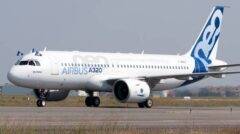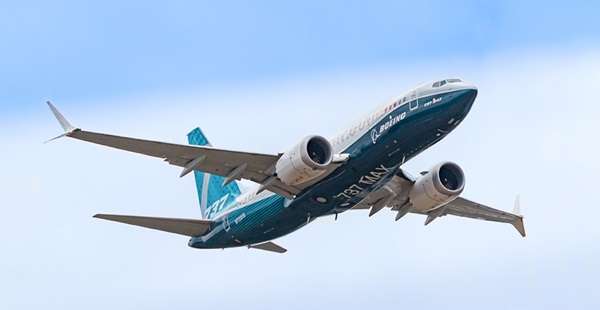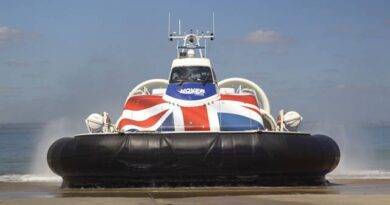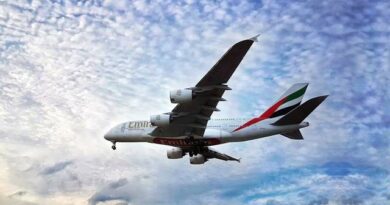Airbus A320neo vs. Boeing 737MAX: A Comprehensive Comparison
The Airbus A320neo and the Boeing 737 MAX are two of the most advanced narrow-body aircraft designed for fuel efficiency, environmental sustainability, and operational profitability. They are the latest updates in the highly competitive single-aisle jet segment, both aimed at meeting airlines’ needs for cost-effective, reliable, and eco-friendly aircraft. In this article, we will provide a detailed comparison between these two industry leaders. We’ll cover areas like design, fuel efficiency, range, passenger comfort, and operational performance to help you understand which aircraft comes out on top.
Introduction to the A320neo and 737 MAX Families
Airbus A320neo
The A320neo (New Engine Option) was introduced by Airbus to improve fuel efficiency and reduce emissions, addressing the demands of modern aviation. With new engines and advanced aerodynamics, the A320neo family offers several models, including the A319neo, A320neo, and A321neo, catering to various airline needs. Its competitive advantages revolve around fuel efficiency and passenger comfort, making it popular with airlines worldwide.
Boeing 737 MAX
The Boeing 737 MAX series is Boeing’s answer to Airbus’s A320neo family. The MAX series includes the 737 MAX 7, MAX 8, MAX 9, and MAX 10. It builds on the legacy of the classic 737 but with significant upgrades in engines, aerodynamics, and performance features. The MAX series has a focus on range and cost savings, but recent history and technical challenges have brought additional scrutiny.,


Here’s a compact comparison table for the Airbus A320neo and Boeing 737 MAX:
| Feature | Airbus A320neo | Boeing 737 MAX |
|---|---|---|
| Fuel Efficiency | 15-20% improvement over A320ceo | 14-15% improvement over 737 NG |
| Engines | CFM LEAP-1A or Pratt & Whitney PW1100G | CFM LEAP-1B |
| Range | Up to 3,400 nautical miles (A320neo); 4,700 nautical miles (A321neo XLR) | Up to 3,550 nautical miles (MAX 8) |
| Passenger Capacity | 140-244 (A320neo family) | 138-230 (737 MAX family) |
| Cabin Width | 12 ft 1 in (wider seats) | 11 ft 7 in |
| Noise Levels | Lower cabin noise | Slightly higher cabin noise |
| Safety Record | Strong, with no major incidents | Initially grounded due to MCAS issues, recertified in 2021 |
| Operational Cost | Low, designed for fuel and maintenance efficiency | Competitive, though MCAS-related training may add cost |
| Popular Markets | Europe, Asia | North America, some Asian markets |
| Notable Airlines | IndiGo, China Southern, easyJet | Southwest, American Airlines, Ryanair |
1. Fuel Efficiency and Environmental Impact
Both aircraft families focus on reducing fuel consumption and emissions, but they achieve this through different approaches.
- Airbus A320neo: Equipped with either the CFM International LEAP-1A or Pratt & Whitney PW1100G engines, the A320neo is reported to save up to 15-20% in fuel consumption compared to previous A320 models. This efficiency translates to a reduction in CO2 emissions, appealing to environmentally conscious airlines and passengers alike.
- Boeing 737 MAX: The 737 MAX family uses CFM International’s LEAP-1B engines, specifically optimized for this aircraft. The MAX offers similar fuel savings of around 14-15% compared to its predecessor, the 737 NG. Boeing claims that these savings make the MAX family one of the most cost-effective in terms of fuel per seat-mile, though its environmental impact remains a point of comparison with the A320neo.
2. Range and Operational Flexibility
The range of an aircraft impacts the routes airlines can serve without refueling stops.
- A320neo: The A320neo has a range of about 3,400 nautical miles, giving it substantial flexibility for both short-haul and medium-haul routes. The A321neo, with additional fuel tanks in some models, can fly even farther, reaching up to 4,700 nautical miles, which allows it to serve transatlantic routes.
- 737 MAX: The 737 MAX 8 has a range of approximately 3,550 nautical miles, while the 737 MAX 10, designed for higher passenger loads, has a slightly shorter range. The MAX family’s range allows it to compete directly with the A320neo, but Airbus’s longer-range A321neo variant provides a slight advantage for longer-haul operations.
3. Passenger Comfort and Cabin Experience
Passenger comfort is increasingly important to airlines aiming to differentiate themselves in a crowded market.
- Airbus A320neo: Known for a slightly wider fuselage, the A320neo offers about one additional inch of seat width compared to the 737 MAX. Airbus also utilizes quieter engines, reducing cabin noise levels. Advanced air filtration and lighting options enhance the passenger experience, and the cabin design allows for more flexible seating configurations.
- Boeing 737 MAX: Boeing’s Sky Interior on the MAX models includes LED lighting, larger overhead bins, and sculpted sidewalls, creating a modern and spacious feel. However, the slightly narrower fuselage restricts seat width and limits potential layout configurations compared to the A320neo. While many passengers find the interior appealing, the Airbus has an edge in terms of cabin width.
4. Technical and Safety Considerations
Safety and reliability are paramount for airlines and passengers alike.
- A320neo: Airbus’s extensive experience in fly-by-wire technology offers an advanced flight control system, contributing to its strong safety record. The A320neo family has not faced major technical setbacks, making it a reliable choice in the eyes of many airlines.
- 737 MAX: The 737 MAX series faced setbacks with two fatal crashes linked to the MCAS (Maneuvering Characteristics Augmentation System) and spent nearly two years grounded globally. Boeing made extensive modifications to the system to ensure safety, and the MAX has since returned to service. However, the grounding left a lasting impact on Boeing’s reputation, though the aircraft now meets rigorous regulatory standards.
5. Cost of Operation and Maintenance
Operating costs, including maintenance, significantly impact an airline’s profitability.
- A320neo: The Airbus A320neo is designed for low maintenance costs, supported by the reliability of the engines and systems. The reduced fuel consumption and efficient maintenance schedules contribute to its appeal for budget-conscious carriers.
- 737 MAX: Boeing claims the 737 MAX has lower operating costs per seat than previous models, aiming to make it competitive with the A320neo. However, some airlines have noted additional training costs associated with the MCAS system, although Boeing has worked to streamline this process.
6. Market Share and Airline Preference
Market share can reflect the preferences of airlines, though both aircraft families hold substantial orders and deliveries.
- A320neo: Airbus leads slightly in the narrow-body market, particularly in Europe and Asia, with significant orders from large carriers such as easyJet, IndiGo, and China Southern. The A320neo’s versatility and reliability have contributed to its popularity globally.
- 737 MAX: Boeing holds a strong market presence in North America and has secured large orders from Southwest Airlines, American Airlines, and Ryanair. Despite its setbacks, the 737 MAX continues to attract orders, particularly in regions where Boeing’s historical relationships are strong.
Airbus A320neo Family Variants
| Aircraft Variant | Passenger Capacity | Range (Nautical Miles) | Notes |
|---|---|---|---|
| Airbus A319neo | 120-160 | Up to 3,750 | Smallest A320neo variant, suited for short-haul routes |
| Airbus A320neo | 140-180 | Up to 3,400 | Standard variant, popular for medium-haul routes |
| Airbus A321neo | 180-244 | Up to 4,000 | Higher capacity; flexible for longer routes |
| Airbus A321XLR | 180-220 | Up to 4,700 | Extended range variant for transatlantic flights |
Boeing 737 MAX Family Variants
| Aircraft Variant | Passenger Capacity | Range (Nautical Miles) | Notes |
|---|---|---|---|
| Boeing 737 MAX 7 | 138-153 | Up to 3,850 | Smallest MAX variant; efficient for regional flights |
| Boeing 737 MAX 8 | 162-210 | Up to 3,550 | Most popular MAX model; suitable for medium-haul |
| Boeing 737 MAX 9 | 178-220 | Up to 3,550 | Higher capacity, similar range as MAX 8 |
| Boeing 737 MAX 10 | 188-230 | Up to 3,300 | Largest variant; slightly reduced range, ideal for high-density routes |
Conclusion: Which Aircraft is Better?
The Airbus A320neo and Boeing 737 MAX each offer unique benefits, and the choice often depends on specific airline needs, route structures, and regional preferences. Here’s a quick recap:
- Choose the A320neo if:
- A quieter, slightly roomier cabin is essential.
- Long-range capabilities (such as the A321neo for transatlantic flights) are a priority.
- A proven record with fewer technical setbacks is preferred.
- Choose the 737 MAX if:
- Operating cost per seat is the primary focus.
- You operate in regions where Boeing support and historical connections are strong.
- A versatile narrow-body option for medium-haul flights with low fuel costs is desired.
Both the A320neo and 737 MAX represent the latest in aviation technology, each suited to modern airline needs. Their competition drives innovation, pushing both manufacturers to develop safer, greener, and more efficient aircraft. Airlines around the world benefit from these advancements, as do passengers and the environment.
References
For this comparison, sources include data and insights from leading aviation resources and publications:
- Airbus and Boeing official data on the A320neo and 737 MAX.
- Aviation Week and FlightGlobal for technical comparisons and industry insights.
- IATA and ICAO reports on fuel efficiency and environmental impacts.
- Regulatory agency publications such as the FAA and EASA for safety standards and certifications.


